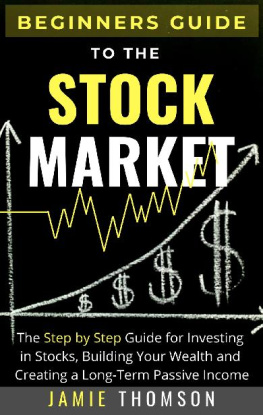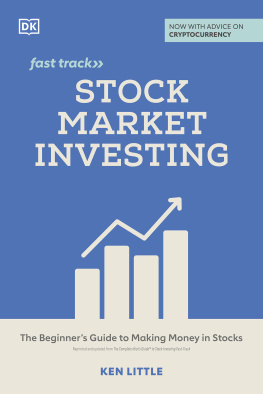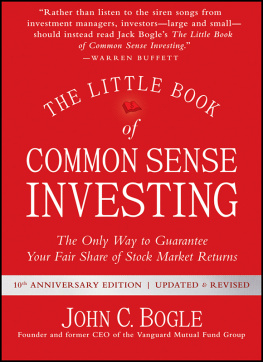

Copyright 2013 by John Del Vecchio and Tom Jacobs. All rights reserved. Except as permitted under the United States Copyright Act of 1976, no part of this publication may be reproduced or distributed in any form or by any means, or stored in a database or retrieval system, without the prior written permission of the publisher.
ISBN: 978-0-07-179198-4
MHID: 0-07-179198-1
The material in this eBook also appears in the print version of this title: ISBN: 978-0-07-179197-7, MHID: 0-07-179197-3.
All trademarks are trademarks of their respective owners. Rather than put a trademark symbol after every occurrence of a trademarked name, we use names in an editorial fashion only, and to the benefit of the trademark owner, with no intention of infringement of the trademark. Where such designations appear in this book, they have been printed with initial caps.
McGraw-Hill eBooks are available at special quantity discounts to use as premiums and sales promotions, or for use in corporate training programs. To contact a representative please e-mail us at bulksales@mcgraw-hill.com.
This publication is designed to provide accurate and authoritative information in regard to the subject matter covered. It is sold with the understanding that neither the authors nor the publisher is engaged in rendering legal, accounting, or other professional service. If legal advice or other expert assistance is required, the services of a competent professional person should be sought.
From a Declaration of Principles Jointly Adopted by a Committee of the American Bar Association and a Committee of Publishers and Associations
TERMS OF USE
This is a copyrighted work and The McGraw-Hill Companies, Inc. (McGraw-Hill) and its licensors reserve all rights in and to the work. Use of this work is subject to these terms. Except as permitted under the Copyright Act of 1976 and the right to store and retrieve one copy of the work, you may not decompile, disassemble, reverse engineer, reproduce, modify, create derivative works based upon, transmit, distribute, disseminate, sell, publish or sublicense the work or any part of it without McGraw-Hills prior consent. You may use the work for your own noncommercial and personal use; any other use of the work is strictly prohibited. Your right to use the work may be terminated if you fail to comply with these terms.
THE WORK IS PROVIDED AS IS. McGRAW-HILL AND ITS LICENSORS MAKE NO GUARANTEES OR WARRANTIES AS TO THE ACCURACY, ADEQUACY OR COMPLETENESS OF OR RESULTS TO BE OBTAINED FROM USING THE WORK, INCLUDING ANY INFORMATION THAT CAN BE ACCESSED THROUGH THE WORK VIA HYPERLINK OR OTHERWISE, AND EXPRESSLY DISCLAIM ANY WARRANTY, EXPRESS OR IMPLIED, INCLUDING BUT NOT LIMITED TO IMPLIED WARRANTIES OF MERCHANTABILITY OR FITNESS FOR A PARTICULAR PURPOSE. McGraw-Hill and its licensors do not warrant or guarantee that the functions contained in the work will meet your requirements or that its operation will be uninterrupted or error free. Neither McGraw-Hill nor its licensors shall be liable to you or anyone else for any inaccuracy, error or omission, regardless of cause, in the work or for any damages resulting therefrom. McGraw-Hill has no responsibility for the content of any information accessed through the work. Under no circumstances shall McGraw-Hill and/or its licensors be liable for any indirect, incidental, special, punitive, consequential or similar damages that result from the use of or inability to use the work, even if any of them has been advised of the possibility of such damages. This limitation of liability shall apply to any claim or cause whatsoever whether such claim or cause arises in contract, tort or otherwise.
To my parents Barbara, John, and AllenJDV
To my partner Vilis IndeTJ
Contents
Acknowledgments
We thank our agent, Bob Mecoy, for his steady hand, unfailing confidence, and sense of humor and our sponsoring editor Stephanie Frerich at McGraw-Hill, for taking us on and being enthusiastic, patient, and good-humored. We couldnt be more fortunate with agent and editor. We also thank The Motley Fool for giving us both our starts and the freedom to grow, and for encouraging all viewpoints and strategiesnever a party line. And thanks to Motley Fool colleagues and friendsanalyst Alex Pape and senior analyst Michael Olsen, CFAfor taking scarce time available after their demanding jobs to provide comments and corrections on parts of the manuscript. And to technical writer, graphic artist, and fine artist Martha Hughes for manuscript preparation.
JDV: I would like to thank my parents Barbara, John, and Allen for all their love and support over the years. Special thanks to my business partner Brad Lamensdorf. Without him, The Active Bear ETF (HDGE) would not be possible. Thanks to Dean Somes, Jeff Williams, and Tom Sprunger for all their hard work on market timing. Jeff Middleswart for allowing us to use my work as case studies in this book. Tom because this book would not be possible without him. And finally to The Motley Fool where Tom and I first met and a place that spawned many opportunities for us in the ensuing years.
TJ: I would like to thank John for introducing me to the field of earnings quality early in my value investing career, asking me to do this book with him, and being a great collaborator and friend. To The Motley Fool for giving me my first and many opportunities as an investment analyst and to make lasting friendships there. To my late father, who bought me two shares of Ford Motor in 1968 to start my investing life, and taught me economics lessons (some of which I remembered and others only through mistakes). And foremost to my partner, Vilis Inde, for his many years of love, support, good humor, and patience.
Introduction: What This Book Does for You
Simple: Show me where Im going to die, so I dont go there.
Many investors have owned a stock that skipped merrily on its way higher and higher, the CEO a deity, everything skittles and beeruntil one day they wake up to see that stock has detonated a bomb in their brokerage account. They had whistled past the graveyard, and now they are in it. With this book, you wont be one of them. We help you find where the investing bodies are buried, so you dont join them.
Shareholders Beware
The world has never known since the earliest slingshot hawkers at the corner of Boulder and Dinosaur a time without financial chicanery. From Dutch tulipomania to the first joint stock companies, managers often devoted more energy to keeping up appearances than to keeping the books. Think of the South Sea Company bubble of the early 1700s and the railroad and canal companies of the 1800s.
Shareholders be damned was the smug rule of managers until the Crash of 1929 and Great Depression led to their first obstacle, the 1934 founding of the U.S. Securities and Exchange Commission. Sure, the Great and Glorious Company Management Oz still tried smoke, fire, sound, and nonsense to prevent Dorothy and the shareholder gang from paying attention to what was really behind the curtain, but when the persistent Totos could finally poke their noses behind the management curtain, they did so with the watchdog SEC on their side.
The game may have become tougher in the ensuing decades, but managements have remained inventive. Some know they can placate the majority of shareholders with high-calorie, low-nourishment earnings press releases. Its then just a touch more work to distract the handful who actually listen to earnings conference calls or read the transcripts, but after that its a breeze. Few investors even glance at company SEC filings, and only a fraction of those burrow into their seemingly objective financial statement lines and obscure notes.
Next page






